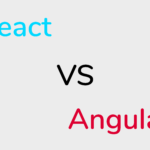How to make my free blog site
The step-by-step manual on the page will deliver you how to create a blog in 20 minutes with just the most basic computer talents.
After completing this guide you will have a gorgeous blog that is watchful to share with the earth.
This manual is made specifically for beginners. I will step you through every step, using a bunch of photos and videos to create it all clear.
If you get stuck or have queries at any point, just send me a message and I will do my finest to support you.
What is a blog anyway?
In short, a blog is a type of website that focuses mostly on written content, also known as blog positions. In the famous culture, we multiple often listen to word blogs or certain blog sites, but as you’ll notice in this course, you can create a thriving blog on just virtually any subject possible.
Bloggers usually write from a unique perspective that allows them to link directly with their readers. In extra, most blogs even have a “comments” section where visitors can speak with the blogger. Interacting with your visitors in the remarks area helps to promote the relationship between the blogger & the reader.
This direct link to the text is one of the major advantages of creating a blog. This connection allows you to interact & communicate ideas with other like-minded individuals. It also allows you to make trust with your readers. Having the confidence and commitment of your readers also opens up the door to creating cash from your blog, which is something I examine later in this guide.
The good news is that the internet is bursting with change right now. More people than ever are online. This explosion in growth means more additional potential texts for your blog. In short, if you are considering creating a blog then there is no better moment than good now.
Start Blog in 6 Steps
- Pick a blog name. Pick a descriptive word for your blog.
- Get your blog online. Register your blog and call hosting.
- Customize your blog. Select a free blog layout template and tweak it.
- Write & publish your first post. Share your ideas with the globe. The fun part!
- Upgrade your blog. Get more people to read your blog with the right marketing.
- Make cash blogging. Select several choices to monetize your blog.

How can I create my own blog site?
Step 1: Choose a Blogging Platform
The first step in creating your blog site is to choose a blogging platform. There are many blogging platforms open, but some of the most popular include WordPress, Blogger, and Tumblr. Each platform has its features and benefits, so it's important to pick one that meets your requirements.
Step 2: Select a Domain Name & Hosting Provider
Once you have selected a blogging platform, the next step is to select a domain name & hosting provider. people will use to access your blog site, and your hosting provider is the company that will host your blog site on the internet. When selecting a domain name, it's important to pick a name that is effortless to reflect & easy to spell. You can register your domain name with a domain registrar such as Hostiger, or GoDaddy. For hosting, you can choose from a variety of hosting providers such as HostGator, Bluehost, or SiteGround. Hosting providers offer different hosting plans with varying features and prices, so it's important to choose one that fits your needs and budget.
Step 3: Install and Customize Your Blogging Platform
Once you have your domain name and hosting provider set up, the next step is to install and customize your blogging platform. Most hosting providers show the one-click building of popular blogging platforms such as WordPress, making it easy to get started. Once your blogging platform is installed, you can customize the look and feel of your blog site by choosing a theme and customizing your site's layout and design.
Step 4: Create Content for Your Blog
With your blog site set up and customized, it's time to start creating content for your blog. You can compose blog posts on a variety of topics, including personal stories, opinions, news, and tips. When making content for your blog, it's important to note clearly and engagingly what will keep your readers interested. You should also make sure to use images and other media to make your blog posts visually appealing.
Step 5: Promote Your Blog
Once you have created content for your blog, it's important to promote your blog to attract readers. You can promote your blog by sharing your blog posts on social media, participating in online forums and communities, and reaching out to other bloggers in your niche.
How do I get a free URL for my blog?
Creating a blog can be an exciting and rewarding experience, but before you can start sharing your content with the world, you need a web address, also known as a URL. While some blogging platforms offer free subdomains, such as yourblogname.wordpress.com or yourblogname.blogspot.com, having your domain name can make your blog look more professional and memorable. In this article, we'll explore how to get a free URL for your blog.
Step 1: Choose a Domain Registrar
The first step in getting a free URL for your blog is to choose a domain registrar. A domain registrar is a business that allows you to register a domain name on your website. There are many domain registrars available, but some popular options include Namecheap, GoDaddy, and Bluehost.
Step 2: Search for Available Domain Names
Once you have chosen a domain registrar, the next step is to search for available domain names. Most domain registrars have a search tool that allows you to check the availability of a domain name. You can search for different domain extensions, such as .com, .org, or .net, depending on what is available and what fits your blog.
Step 3: Register Your Domain Name
Once you have found an available domain name that you like, the next step is to register it. Some domain registrars offer free domain names with certain hosting packages, while others offer discounts or promotions for first-time customers. Be sure to read the fine print and choose a registrar that offers the best deal for your needs.
Step 4: Connect Your Domain Name to Your Blog
After you have registered your domain name, the final step is to connect it to your blog. The process for connecting your domain name to your blog will depend on the platform you are using. Many blogging platforms, such as WordPress, have tutorials or support documentation that will guide you through the process.
In some cases, you may need to modify the DNS settings for your domain name to point to your blog. This process may seem intimidating at first, but most domain registrars and blogging platforms provide step-by-step instructions to make it as easy as possible.
In conclusion, getting a free URL for your blog is relatively simple. By following the steps outlined in this article, you can register your domain name and give your blog a professional, memorable web address. Having your domain name can also help with search engine optimization and make it easier for readers to find and share your content.
Can I create a free blog with Google?
Yes, you can create a free blog with Google through their blogging platform, called Blogger. Blogger is a popular platform that allows you to create and manage your blog easily and efficiently. In this article, we'll explore how to create a free blog with Google's Blogger platform.
Step 1: Sign up for Google Account
The first step in creating a free blog with Google is to sign up for a Google account if you don't already have one. You can sign up for a Google account by visiting the Google Sign Up page and filling out the required information.
Step 2: Go to Blogger
Once you have a Google account, the next step is to go to the Blogger website. To access Blogger, simply go to www.blogger.com and sign in with your Google account credentials.
Step 3: Create a New Blog
Once you are signed in to Blogger, the next step is to create a new blog. To do this, click on the "New Blog" button, which is located in the top left corner of the screen. You will be prompted to enter a title and web address for your new blog.
Step 4: Choose a Template
After you have created your new blog, the next step is to choose a template. Blogger offers a variety of free templates that you can use to customize the look and feel of your blog. You can choose a template by clicking on the "Template" tab, which is located on the left-hand side of the screen.
Step 5: Customize Your Blog
Once you have chosen a template, you can customize your blog by adding widgets, changing the layout, and modifying the colors and fonts. Blogger makes it easy to customize your blog with its drag-and-drop interface.
Step 6: Start Writing!
After you have customized your blog to your liking, the final step is to start writing! Blogger makes it easy to create and publish new blog posts. Simply click on the "New Post" button, enter your content, and hit publish.
In conclusion, creating a free blog with Google's Blogger platform is straightforward. By following the steps outlined in this article, you can create a new blog and start sharing your ideas and content with the world. With its user-friendly interface and powerful features, Blogger is a great choice for anyone looking to create a free blog.
Can a blog be completely free?
Yes, it is possible to create and maintain a blog completely free of charge. There are several blogging platforms available that offer free plans with all the basic features you need to create and publish content. In this article, we'll explore the various ways you can create a completely free blog.
Free Blogging Platforms
There are several free blogging platforms available that allow you to create a blog without any upfront costs. Some of the most famous free blogging platforms contain
WordPress.com
WordPress.com is a popular blogging platform that offers a free plan with basic features such as a limited selection of themes and plugins, and a WordPress.com subdomain.
Blogger
Blogger is free blogging platform acknowledged by Google. It offers a variety of free templates and allows you to customize your blog with widgets and other features.
Wix
Wix is a website builder that also offers a free blogging platform. It includes a drag-and-drop interface & variety of templates to select from.
Tumblr
Tumblr is a micro-blogging platform that allows you to create short-form content such as text posts, photos, and videos. It offers a free plan with basic features and a Tumblr subdomain.
Free Domain Name and Hosting
In addition to free blogging platforms, it is also possible to create a free blog with your domain name and hosting. Some web hosting providers offer free plans with limited features and storage space. Some popular options include
InfinityFree
is a web hosting provider that offers free hosting plans with unlimited disk space and bandwidth.
000WebHost
000WebHost is a free web hosting provider that offers 1 GB of disk space and 10 GB of bandwidth.
ByetHost
ByetHost offers free hosting plans with 1 GB of disk space and 50 GB of bandwidth.
FreeHosting
FreeHosting is a web hosting provider that offers free plans with 10 GB of disk space and unlimited bandwidth.
Conclusion
In conclusion, it is possible to create and maintain a blog completely free of charge. With free blogging platforms and web hosting providers available, anyone can start a blog without spending a dime. While free plans may come with limitations, they offer a great way to get started and build your online presence without any upfront costs. As your blog grows, you may choose to upgrade to a paid plan to unlock more features and customization options.
How do bloggers get paid?
Blogging has become a popular way for people to share their thoughts and ideas with a large audience. As blogging has grown in popularity, more and more people are wondering how bloggers get paid. While there is no single answer to this question, there are several ways that bloggers can earn money from their blogs. In this blog post, we will explore some of the most common ways that bloggers get paid.
Advertising
One of the most common methods that bloggers get paid for is via advertising. There are several different types of advertising that bloggers can use to monetize their blogs. These include display ads, sponsored content, and affiliate marketing.
Display ads are the most common form of advertising used by bloggers. These ads are usually placed in the sidebar or at the top or bottom of a blog post. Bloggers can earn money from display ads by charging a fee for ad placement or by using a third-party advertising network like Google AdSense.Affiliate marketing is another form of advertising that bloggers can use to earn money. With affiliate marketing, bloggers promote products or services and earn a commission on any sales that result from their promotion.
Product Sales
Another way that bloggers can earn money is by selling their products. This can include physical products like books, clothing, or merchandise, or digital products like eBooks, courses, or webinars. Selling products can be a great way for bloggers to earn money because they have complete control over the products they sell and the pricing. However, it can also be more time-consuming than other monetization methods because bloggers have to create and manage their products.
Services
Some bloggers also offer services as a way to monetize their blogs. This can include services like coaching, consulting, or freelance writing. By offering services, bloggers can earn money by using their expertise to help others. Like selling products, offering services can be time-consuming, but it can also be a great way for bloggers to earn money while doing something they enjoy.
Sponsorships
Finally, some bloggers earn money through sponsorships. This involves working with a brand or company to promote their products or services in exchange for payment. Sponsorships can be a great way for bloggers to earn money because they often involve long-term partnerships that provide a steady stream of income. However, bloggers need to be careful to only work with brands and companies that align with their values and the interests of their audience.
In conclusion, there are several ways that bloggers can earn money from their blogs. While advertising is the most common method, bloggers can also earn money through product sales, services, and sponsorships. Ultimately, the best way for bloggers to monetize their blogs will depend on their goals, their audience, and their personal preferences.
Do blogs still make money?
Yes, blogs can still make money. While it may be more challenging to earn a full-time income from blogging today than it was a few years ago, many bloggers are still able to earn a significant amount of money through their blogs.
However, it's important to note that earning money from a blog typically takes time, effort, and persistence. It's rare for a blogger to start making a significant income from their blog overnight. Most successful bloggers have spent years building up their audience, creating high-quality content, and experimenting with different monetization methods.
Furthermore, the amount of money that a blogger can earn from their blog will depend on a variety of factors, including the size and engagement of their audience, the niche they're in, the monetization methods they're using, and their skills and abilities.
Overall, while blogging may not be a get-rich-quick scheme, it is still possible to earn money from a blog with the right approach and dedication.
Advertising
Advertising is one of the most common ways that bloggers earn money. By displaying ads on their blog, bloggers can earn revenue based on the number of clicks or impressions the ads receive. This can be done through advertising networks like Google AdSense or by working with brands directly.
Affiliate Marketing
Affiliate marketing is another famous way for bloggers to earn money. By promoting products or services on their blog and earning a commission on any resulting sales, bloggers can earn a steady stream of income.
Sponsored Content
Sponsored content is when a brand pays a blogger to create content that promotes its products or services. This can be in the form of a social media post, blog post, or video. Sponsored content can be a lucrative way for bloggers to earn money, but they need to ensure that they are transparent with their audience and only promote products or services that align with their values.
Products and Services
Finally, some bloggers earn money by selling products or services. This can include physical products like books or merchandise, or digital products like courses or webinars. Bloggers can also offer services like consulting or coaching, using their expertise to help others.

